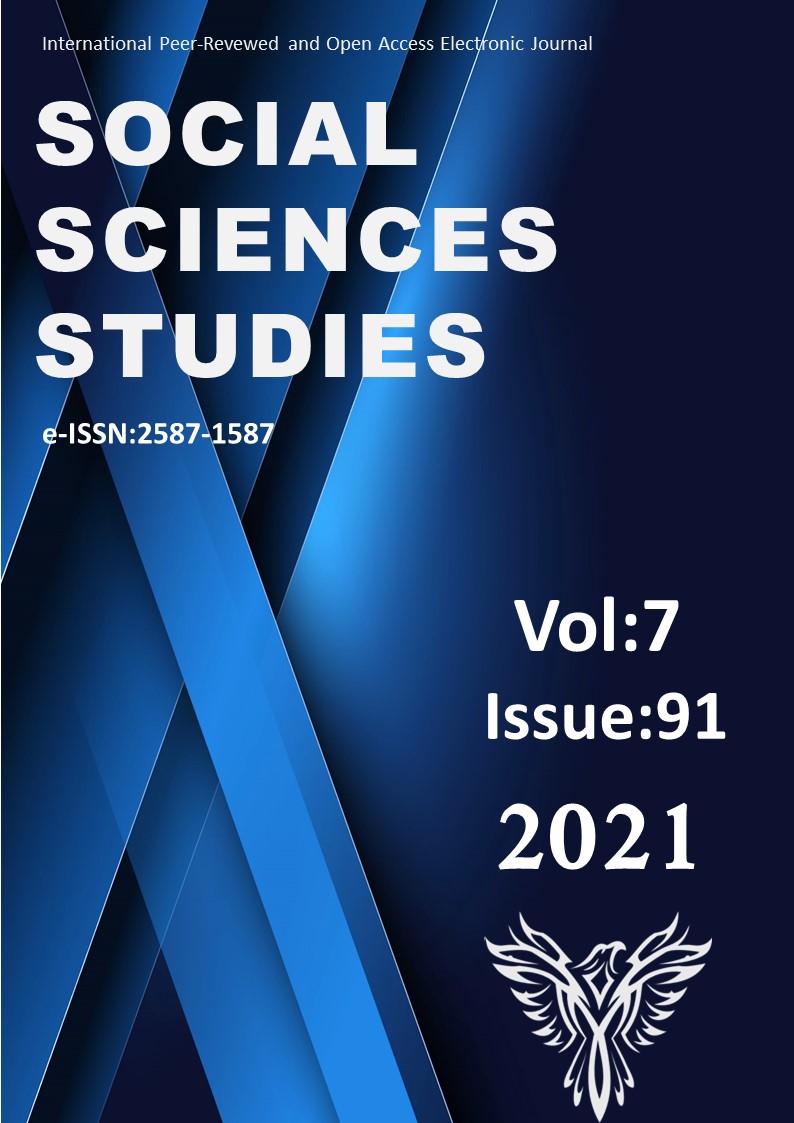DÂRÜ’L-ELHÂN KÜLLİYÂTI’NDA BULUNAN AĞIR ÇENBER USÛLÜNDEKİ BESTELERİN SÖZ-USÛL-VEZİN BAĞLAMINDA RESTORASYONU
Author :
Abstract
Türk Müziği eserlerinin gelecek nesillere aktarılmasında uzun dönemler boyunca meşk usulünün kullanılmış olmasının doğal bir sonucu, sonraki zamanlarda kişilerin kendi nüans ve yorum farklılıkları dolayısıyla eserlerin değişime uğramasıdır. Türk Müziği tarihinde eserlerin notaya alınmasında en kapsamlı girişim olarak Dârü’l-Elhân tarafından yürütülen transkripsiyon çalışmalarına dair inceleme de, güftelerde yazım yanlışlarının muhtemel olduğuna, vezin hatalarının ve güftenin anlamını bozan kelimelerin varlığına dair bulgular ortaya koymaktadır. Bu kapsamda çalışmanın amacı Dârü’l-Elhân Külliyâtı’nda notaya alınmış Ağır Çenber usûlündeki beste formu örnekleri üzerinden eserlerin özgünlüğünü usûl-vezin ilişkisi bağlamında inceleyerek transkripsiyonlarını nota üzerinde simetrik yerleşimini sağlayıp bu bağlamda restarosyanlarını gerçekleştirmektir. Çalışmanın izleyeceği yöntem Türk Müziği sözlü eserlerinin en önemli ögesinin güfte olduğu, bu anlamda güfte ile müzik arasında birbirini destekleyen yapılar olduğu ve usûl-vezin ilişkisinde bozulmaların muhtemelen daha sonraki dönemlerde ortaya çıkmış olabileceği ve bu bozulmaların giderilmesi ile eserin özgün haline daha yakın bir transkripsiyonun elde edilebileceği kabulüne dayanmaktadır. Eserlerin restorasyonunda öncelikle ilgili eserin vezni tespit edilmiş ve güftede vezni bozan kelimelerin varlığı halinde ilgili kelimeler etimolojik olarak incelenip varsa ilgili hatalar düzeltilerek güfte onarımları gerçekleştirilmiştir. Sonrasında onarılan güfte nota üzerine tekrar yerleştirilip zeminhânedeki simetrik işleyişin meyanhânede ve güfte tekrarlarında olup olmadığı incelenmiştir. Mısralarda bozulmalara rastlandığında zeminhânedeki simetrik yapı göz önünde bulundurularak meyanhânedeki ve güfte tekrarları kısmındaki kelimeler uygun nota birimlerine yerleştirilmiştir.
Keywords
Abstract
A natural consequence of the use of meşk method in Turkish Music to transfer works to future generations for long periods is that the works undergo changes in later times due to nuances and interpretation differences of individuals. An examination on the transcription studies carried out by Dârü'l-Elhân, as the most comprehensive attempt in the notation of works in the history of Turkish Music, also reveals findings about the possibility of spelling mistakes in the lyrics, the existence of rhythm errors and words that distort the meaning of the lyrics. In this context, the aim of the study is to examine the originality of the notated works in the context of the usûl-vezin (pattern-rhythm) relationship, through the samples of the beste works in the form of Ağır Çenber that was notated in the Dârü’l-Elhân Külliyât, to ensure the symmetrical placement of their transcriptions on the note and to perform their restoration in this context. The method to be followed by the study is based on assumptions are that the most important element of the Turkish Music oral works is the güfte (lyrics), in this sense, there are structures that support each other between the güfte and the melody, and it is possible that the deteriorations in the usûl-vezin relationship may have emerged in later periods, and that a transcription closer to the original form of the work can be obtained by removing these distortions. In the restoration of the works, first of all, the rhythm of the related work was determined, and in case of the presence of words that distort the rhythm, the related words were examined etymologically, and if any, the relevant errors were corrected and the lyrics were repaired. Afterwards, the repaired lyrics were placed on the note and it was examined whether the symmetrical placement in the part of zeminhâne was in the parts of meyanhâne and the repetitions of the lyrics. When distortions are found in the verses, the words in the meyanhâne and the repetitions of the lyrics are placed in the appropriate note units, taking into account the symmetrical structure in the zeminhâne.





